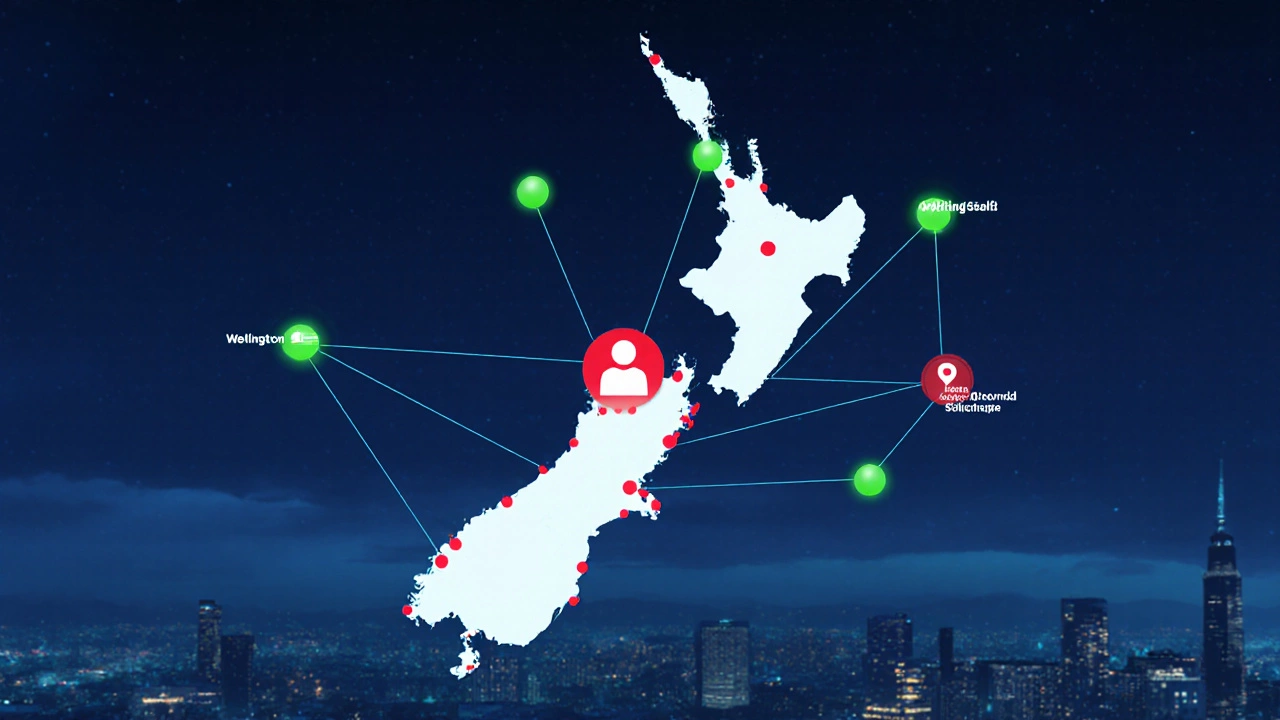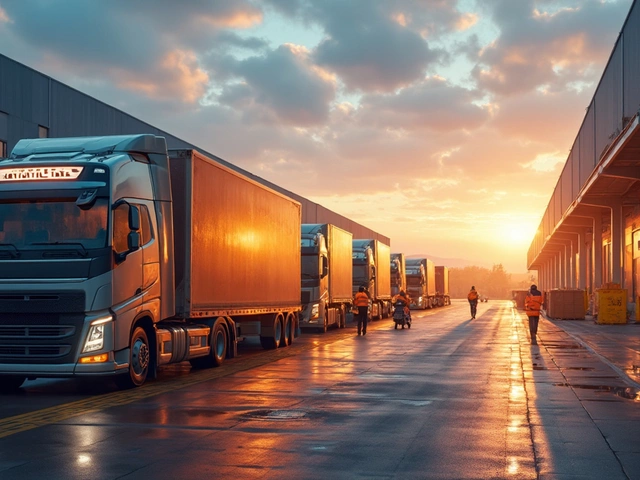When you run an online store, getting your product to the customer isn’t just about printing a label and dropping it in the mail. It’s a carefully balanced system-and the 4 P's of logistics are the backbone of that system. If you’ve ever had a package arrive late, damaged, or to the wrong address, you’ve felt what happens when one of these P's breaks down. This isn’t theory. It’s what keeps your customers coming back-or drives them away.
Product: What You’re Shipping Matters More Than You Think
The first P is Product. Sounds obvious, right? But in logistics, it’s not just about what the item is-it’s about its size, weight, fragility, temperature needs, and even how it’s packaged. A 500g ceramic mug needs different handling than a 2kg Bluetooth speaker. One might need bubble wrap and a rigid box. The other might need anti-static foam and moisture barriers.
Amazon’s return rate for fragile items is 30% higher than for durable goods, according to their 2024 logistics report. Why? Because packaging and handling weren’t matched to the product’s real needs. If you sell handmade soaps, you don’t just slap them in a poly mailer. You need sealed, cushioned containers. If you sell batteries, you need UN-certified packaging for air freight. Ignoring product-specific logistics rules leads to damaged goods, customer complaints, and chargebacks.
Placement: Where You Store Your Stuff Changes Everything
Placement is about location. Not just your warehouse, but where your inventory sits across the country-or the world. The goal? Get your product closer to the customer before they even click "Buy."
Think about it: if you’re based in Wellington and your biggest customer base is in Auckland, shipping every order from your basement means 2-3 day delivery. But if you store 30% of your stock in an Auckland fulfillment center, you’re offering next-day delivery. That’s a game-changer. Studies show that 68% of online shoppers will abandon their cart if delivery takes longer than 2 days.
Big players like Zara and Kogan use micro-fulfillment centers in major cities. Smaller sellers can use third-party logistics (3PL) providers like ShipBob or DHL eCommerce to place inventory in key zones. You don’t need your own warehouse. You just need smart placement.
Price: Logistics Can’t Be an Afterthought in Your Pricing
Price is the trickiest P. Most sellers think of shipping as a cost to minimize. But that’s backwards. Your logistics cost should be baked into your product price-not tacked on as a surprise at checkout.
Free shipping sounds great. But if you’re absorbing $12 in delivery costs on a $25 product, you’re losing money. Instead, raise your price by $8 and offer "free shipping over $35." You still win. Customers feel like they got a deal. You make more profit. And you avoid the trap of offering free shipping on low-margin items just to compete.
Also, don’t ignore hidden logistics costs: fuel surcharges, customs fees, return processing, and storage fees. A $5 shipping label might cost you $14 when you factor in all the behind-the-scenes fees. Use tools like Shippo or Easyship to track real landed costs. If your logistics cost is more than 15% of your product’s price, you need to rethink your pricing-or your shipping strategy.

Promotion: How You Talk About Delivery Builds Trust
Most sellers treat delivery as a footnote: "Ships in 3-5 days." But promotion in logistics means how you communicate delivery to your customer. It’s not just what you say-it’s what you promise and how reliably you deliver on it.
Customers don’t care about your carrier’s name. They care about certainty. "Your order will arrive by Thursday, 5 PM, or we’ll refund your shipping." That’s promotion done right. It sets a clear expectation. And when you hit it? You build loyalty.
Look at Kogan’s delivery tracker. It shows real-time updates from pickup to doorstep. That’s not just tech-it’s marketing. It turns a logistical process into a customer experience. Even if your system is basic, you can still promote delivery reliability. Add a countdown timer on your product page. Send SMS updates. Show estimated delivery dates based on real carrier data. Don’t say "3-5 days." Say "Ordered today? Delivered Wednesday. Guaranteed."
How the 4 P's Work Together
These four aren’t separate. They’re connected. If you sell heavy furniture (Product), but only store it in one warehouse (Placement), your shipping costs (Price) will be sky-high. If you then promise 2-day delivery (Promotion) but can’t deliver it, you lose trust.
Here’s a real example: A New Zealand-based seller of outdoor gear started selling to Australia. They didn’t adjust their Product packaging for humidity, didn’t place stock in Sydney, charged flat-rate shipping, and said "Delivered in 5 days." Result? 40% of orders were returned due to moldy gear. Customers were angry. Sales dropped.
They fixed it: switched to moisture-resistant packaging, used a 3PL in Sydney, adjusted pricing to include Australia-specific freight, and updated their site to say "Ships from Sydney in 1-2 days." Returns dropped to 5%. Sales jumped 60% in 6 months.
What Happens When You Ignore the 4 P's
Ignoring even one P creates a domino effect:
- Bad Product handling → damaged goods → chargebacks
- Poor Placement → slow shipping → cart abandonment
- Hidden Price costs → losing money on "free shipping" → cash flow problems
- Weak Promotion → broken promises → bad reviews
One bad review about late delivery can cost you 10 sales. That’s not speculation. A 2024 study by the New Zealand E-Commerce Association found that a single 1-star delivery review reduces conversion rates by 17%.
Where to Start: Your 4 P's Checklist
Take 15 minutes and answer these questions:
- Product: Does each item have a defined packaging and handling protocol? Are you following carrier rules for hazardous, fragile, or oversized items?
- Placement: Where is your inventory actually located? Are you shipping from one place to everywhere? Could you use a local fulfillment center?
- Price: What’s your true logistics cost per order-including returns, storage, and surcharges? Are you pricing your products to cover it?
- Promotion: Are you telling customers exactly when their order will arrive? Are you updating them? Or are you leaving them guessing?
If you can’t answer "yes" to all four, you’re leaving money on the table-and risking your reputation.
Final Thought: Logistics Isn’t a Cost Center. It’s Your Sales Team.
People don’t buy from your website. They buy from your delivery experience. The 4 P's of logistics aren’t just a textbook model. They’re the real-world engine of your e-commerce business. Get them right, and you turn shipping from a headache into your biggest competitive advantage.
Are the 4 P's of logistics the same as the 4 P's of marketing?
No. The 4 P's of marketing-Product, Price, Place, Promotion-are about how you sell your product. The 4 P's of logistics focus on how you deliver it. While they share names, the meaning changes. In logistics, "Place" means inventory location, not retail channel. "Promotion" means delivery communication, not advertising. They overlap, but they’re different systems.
Do small e-commerce businesses need to follow all 4 P's?
Absolutely. Even if you ship 5 orders a week, ignoring any of the 4 P's will hurt you. A single damaged package or late delivery can lead to a negative review that stays online forever. Small sellers benefit the most from getting these right-because they don’t have brand loyalty to fall back on. Every delivery is a chance to impress.
Can I outsource the 4 P's of logistics?
Yes, and most successful e-commerce sellers do. Third-party logistics (3PL) providers handle Product packaging standards, Placement in regional warehouses, Price calculations through bulk rates, and Promotion by sending automated delivery updates. You keep control of your brand, but let experts manage the logistics. Companies like ShipBob, DHL eCommerce, and Ninja Van offer plug-and-play solutions for small businesses.
What’s the biggest mistake sellers make with logistics?
Treating shipping as an afterthought. Many sellers pick a carrier because it’s cheap, then wonder why returns are high or customers complain. Logistics isn’t a line item-it’s part of your product experience. The cheapest shipping often costs the most in lost trust and returns.
How do I track my logistics performance?
Track three metrics: On-Time Delivery Rate (aim for 95%+), Damage Rate (keep under 2%), and Customer Satisfaction with Delivery (survey after delivery). Use your platform’s built-in analytics or tools like ShipStation. If your damage rate is above 5%, re-evaluate your Product packaging. If on-time delivery is below 90%, check your Placement strategy.





